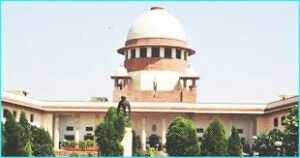GS2 – Polity
Context
The Supreme Court is currently hearing a plea to extend the “creamy layer” concept to SC/ST reservations, aiming to ensure more equitable distribution of benefits within these communities.
About the Creamy Layer
- Definition: The creamy layer denotes relatively affluent and socially advanced members within a disadvantaged group who are excluded from reservation benefits.
- Policy Objective: Designed to prevent dominant subgroups from monopolising affirmative action, ensuring genuinely disadvantaged individuals benefit.
- Current Application: Currently applied only to OBCs, not SC/STs.
- Legal Basis: The Indra Sawhney case (1992) established the foundation for applying the creamy layer principle to OBCs.
- State Authority: Individual states can frame their own OBC creamy layer criteria.
Rationale for Extending the Creamy Layer to SC/STs
- Equity Within Groups: Prioritises economically weaker members without undermining caste-based affirmative action.
- Prevent Concentration of Benefits: Excludes affluent SC/ST families so benefits reach those most in need.
- Substantive Equality: Targeting the poorest ensures meaningful socio-economic upliftment.
- Reduce Intra-Group Inequality: Addresses disparities among members of the same caste.
- Efficiency of Policy Resources: Directs limited benefits to genuine need.
- Enhance Legitimacy: Transparent allocation fosters trust in reservation policies.
Challenges in Extending the Creamy Layer
- Constitutional Sensitivity: Exclusions must not disturb established constitutional balances.
- Persistent Discrimination: Economic progress alone does not eliminate caste-based barriers.
- Legal Constraints: Lack of a clear constitutional mandate could weaken SC/ST protections.
- Implementation Difficulty: Uniform criteria across India are challenging to establish.
- Social Friction: Exclusion could trigger resentment and internal divisions.
- Political Resistance: Dominant subgroups may oppose reforms, risking policy stability.
Judicial Landmarks on Creamy Layer and Sub-Classification
- Indra Sawhney (1992): Introduced creamy layer for OBCs only.
- E.V. Chinnaiah (2005): Declared SCs homogeneous, disallowing internal sub-classification for reservations.
- Jarnail Singh (2018): Applied creamy layer principle to SC/ST promotion-related reservations.
- Davinder Singh (2024): Upheld sub-classification within SC/STs to ensure equitable benefits.
- Ramashankar Prajapati (2025): Issued notice to the Centre regarding a proposed SC/ST creamy layer mechanism.
Way Forward
- Expert Panel: Form a committee to design SC/ST-specific creamy layer criteria.
- Data Framework: Create a socio-economic database to guide equitable allocation.
- Legal Backing: Amend the Constitution to permit economic screening within SC/ST reservations.
- Stakeholder Engagement: Consult communities to build consensus and reduce resistance.
- Periodic Review: Regularly reassess criteria to maintain fairness and effectiveness.





